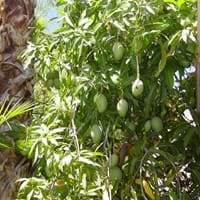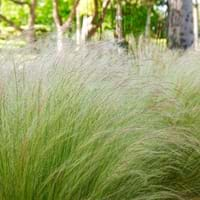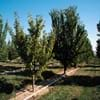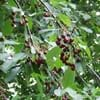Life Span
Perennial
Perennial
Origin
Hybrid origin, India, Melanesia
Southwestern United States, Texas, Mexico
Types
Alphonso, Florigon, Jakarta
Not Available
Number of Varieties
Not Available
Habitat
Subtropical climates, Tropical areas
driveways, open Woodlands, Roadsides, Rocky areas, Slopes, tree wells
USDA Hardiness Zone
10-15
6-10
AHS Heat Zone
Not Available
11 - 4
Sunset Zone
H1, H2, 23, 24
2b, 3a, 3b, 4, 5, 6, 7, 8, 9, 10, 11, 12, 13, 14, 15, 16, 17, 18, 19, 20, 21, 22, 23, 24
Habit
Oval or Rounded
Clump-Forming
Flower Color
Yellow, Red
Not Available
Flower Color Modifier
Bicolor
Bicolor
Fruit Color
Yellow, Gold
Non Fruiting Plant
Leaf Color in Spring
Dark Green, Bronze
Green, Light Green
Leaf Color in Summer
Dark Green, Bronze
Light Green
Leaf Color in Fall
Dark Green, Bronze
Green, Yellow green, Tan
Leaf Color in Winter
Light Green
Green, Yellow green, Gold, Tan
Leaf Shape
Acuminate
Linear
Plant Season
Spring, Summer, Fall, Winter
Spring, Summer, Fall, Winter
Sunlight
Full Sun
Full Sun, Partial Sun
Growth Rate
Medium
Medium
Type of Soil
Loam, Sand
Clay, Loam, Sand
The pH of Soil
Acidic, Neutral, Alkaline
Acidic, Neutral, Alkaline
Soil Drainage
Well drained
Well drained
Bloom Time
Early Spring, Winter, Late Winter
Early Summer, Summer
Tolerances
Drought
Drought
Where to Plant?
Ground
Ground
How to Plant?
Grafting, Seedlings, Stem Cutting, Transplanting
Seedlings
Plant Maintenance
Medium
Medium
Watering Requirements
Over-head watering
Do not water excessively
In Summer
Lots of watering
Lots of watering
In Spring
Moderate
Moderate
In Winter
Average Water
Average Water
Soil pH
Acidic, Neutral, Alkaline
Acidic, Neutral, Alkaline
Soil Type
Loam, Sand
Clay, Loam, Sand
Soil Drainage Capacity
Well drained
Well drained
Sun Exposure
Full Sun
Full Sun, Partial Sun
Pruning
Remove damaged leaves, Remove dead branches, Remove dead leaves
Requires little pruning
Fertilizers
All-Purpose Liquid Fertilizer
Apply 12-6-6 fertilizer
Pests and Diseases
Red blotch
Not Available, Red blotch
Plant Tolerance
Drought
Drought
Flowers
Insignificant
Showy
Flower Petal Number
Single
Single
Foliage Texture
Medium
Fine
Foliage Sheen
Glossy
Matte
Attracts
Birds
Not Available
Allergy
bullous cheilitis, contact allergic dermatitis
Not Available
Aesthetic Uses
Showy Purposes
Landscape Designing, Showy Purposes, small hedge
Beauty Benefits
Acne, Promotes Healthy Hair, Removes dandruff
Not Available
Environmental Uses
Air purification, Food for animals, Food for birds, Shadow Tree
Air purification
Medicinal Uses
Digestion problems, Eye Problems, Nutritive
No Medicinal Use
Part of Plant Used
Whole plant
Leaves
Other Uses
Added to salads, Culinary use, Food for animals, Grown for shade
Used as Ornamental plant
Used As Indoor Plant
Insignificant
No
Used As Outdoor Plant
Yes
Yes
Garden Design
Container, Edible, Feature Plant, Fruit / Fruit Tree, Tropical
Dried Flower / Everlasting, Container, Foundation, Mixed Border, Rock Garden / Wall
Botanical Name
MANGIFERA indica 'Manila'
NASSELLA tenuissima
Common Name
Mango, Manila Mango
Finestem Needlegrass, Mexican Feather Grass
In Hindi
आम
Mexican Feather Grass
In German
Mango
Mexikanische Federgras
In French
Manguier
Mexicaine Herbe Feather
In Spanish
Mangifera indica
Pluma hierba mexicana
In Greek
Manila mango
Μεξικού Αστραπή Grass
In Portuguese
Mangifera indica
Mexican Pena Relva
In Polish
Mango indyjskie
Mexican Feather trawy
In Latin
Manila mango
Mexicanus Pluma Grass
Phylum
Magnoliophyta
Magnoliophyta
Class
Magnoliopsida
Liliopsida
Order
Sapindales
Cyperales
Family
Anacardiaceae
Poaceae
Clade
Angiosperms, Eudicots, Rosids
Angiosperms, Commelinids, Monocots
Tribe
Not Available
Stipeae
Subfamily
Not Available
Not Available
Importance of Manila Mango and Mexican Feather Grass
Want to have the most appropriate plant for your garden? You might want to know the importance of Manila Mango and Mexican Feather Grass. Basically, these two plants vary in many aspects. Compare Manila Mango and Mexican Feather Grass as they differ in many characteristics such as their life, care, benefits, facts, etc. Every gardener must at least have the slightest clue about the plants he wants to plant in his garden. Compare their benefits, which differ in many ways like facts and uses. The medicinal use of Manila Mango is Digestion problems, Eye Problems and Nutritive whereas of Mexican Feather Grass is No Medicinal Use. Manila Mango has beauty benefits as follows: Acne, Promotes Healthy Hair and Removes dandruff while Mexican Feather Grass has beauty benefits as follows: Acne, Promotes Healthy Hair and Removes dandruff.
Compare Facts of Manila Mango vs Mexican Feather Grass
How to choose the best garden plant for your garden depending upon its facts? Here garden plant comparison will help you to solve this query. Compare the facts of Manila Mango vs Mexican Feather Grass and know which one to choose. As garden plants have benefits and other uses, allergy is also a major drawback of plants for some people. Allergic reactions of Manila Mango are bullous cheilitis and contact allergic dermatitis whereas of Mexican Feather Grass have Not Available respectively. Having a fruit bearing plant in your garden can be a plus point of your garden. Manila Mango has showy fruits and Mexican Feather Grass has showy fruits. Also Manila Mango is not flowering and Mexican Feather Grass is not flowering . You can compare Manila Mango and Mexican Feather Grass facts and facts of other plants too.





